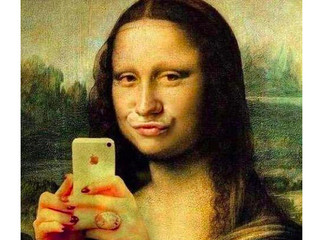
The future of online payments, it seems, will rely on our images.
Google has already introduced technology that would allow you to pay for things without using your hands at all, instead relying instead on visual identification, and now Amazon has filed a patent that would allow users to take selfies for payment verification, rather than a password.
Basically, a user would take a photo or video of themselves to prove who they really are.
“A transaction is authorized using an authentication process that prompts the user to perform an action in view of a camera or sensor. The process identifies the user and verifies that the user requesting the transaction is a living human being. The user is identified using image information which is processed utilizing facial recognition,” the patent says.
“The device verifies that the image information corresponds to a living human using one or more human-verification processes. The device prompts the user to perform an action to confirm the transaction, and causes the transaction to be performed after verifying performance of the action by the identified user.”
Part of this has to do with security, of course, and making it harder for someone to use but the other part of it is that it’s simply a pain in the butt to put in a password on a tiny phone screen, something we have probably all suffered with at some point.
“The entry of these passwords on portable devices is not user friendly in many cases, as the small touchscreen or keyboard elements can be difficult to accurately select using a relatively large human finger, and can require the user to turn away from friends or co-workers when entering a password, which can be awkward or embarrassing in many situations,” the filing says, leading many to store their passwords, which, in turn, makes it easier for them to steal.
“Certain approaches attempt to improve security by adding biometric identification. For example, a computing device might capture an image of a user and analyze that image to attempt to recognize the user using facial recognition software,” Amazon acknowledged, while also noting that, with that kind of technology, someone else could just take a picture of you and use that for authentication.
The technology that Amazon is developing, on the other hand, would be able to determine if the camera was being used by that person, both through prompts for certain actions, like a head tilt or a blink, as well as infrared image information and thermal imaging data “which can assist in determining the presence of a human user.”
This sounds similar to what Google recently introduced, in which a customer can use their own face to pay for goods as physical retail locations.
With that technology users have to install an app which will use Wi-Fi, Bluetooth, and location services to determine if they are near a store that has access to this technology. Once they go to pay, they tell the cashier,”I’ll pay with Google,” and the clerk can confirm his or her identity with only their initials, and the photo that the user has added to their Hands Free profile. Once they verify that it’s the right person, they are good to go.
While they have different use cases, most notably that Amazon’s would be for buying things online, while Google’s would be used to buy things in person. The other difference is that it’s not clear that Amazon would store any sort of payments into the facial recognition software, or if it would just be used to verify that the user is who he or she says they are.
The common thread here is that they both use facial recognition, and the proliferation of cameras, to take some of the hassle out of paying for things, or at least to make it more secure.
This patent was first noticed by Re/Code.
VatorNews has reached out to Amazon for comment on this technology. We will update this story if we learn more.
(Image source: blog.privatewifi.com)



















